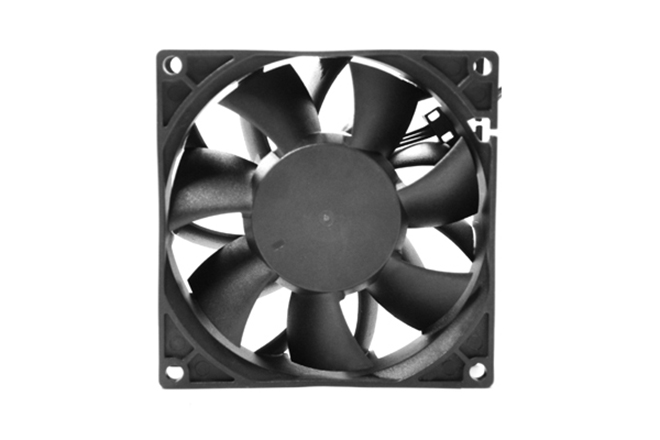

The air flow and air pressure of the cooling fan are important parameters in engineering that are used for effective heat dissipation. Let's discuss how to calculate them.

Air flow represents the air volume driven per unit time. The greater the air flow, the more heat can be carried away, thereby improving the heat dissipation efficiency. The calculation formula of air flow is as follows:
Air flow (Q) = (\ frac {1} {\ Delta t}) (unit: CFM)
Air flow (Q) = (\ frac {0} {\ Delta t}) (unit: CMM)
(\ Delta t) refers to the difference between the temperature of the air expelled by the fan and the ambient temperature. For example, if a CPU with thermal power expels air at a temperature of 38 degrees Celsius in a room with a temperature of 28 degrees Celsius, a fan with an air flow of 11.2 CFM fan is required. If the temperature difference is 2 degrees, then a fan with an air flow of 57.2 CFM is needed.
Air pressure indicates the force exerted by the fan on the air. It is related to the wind speed and the fan area. The calculation formula of air pressure is as follows:
Air pressure (P) = (\ frac {\ rho \ cdot V^ 2} {2})
(\ rho) is the air density and (V) represents the wind speed. The relationship between air pressure, air flow and wind speed can be clarified by this formula.
If you're still unsure of which cooling fan to get and how to calculate the air flow and pressure correctly, WELLSUNFAN can help you make the right choice. Our experts will ask for more details about your needs and budget so we can help you make the best decision for your business.
When precision in thermal management matters, WELLSUNFAN stands as your trusted partner with over a decade of engineering excellence in cooling fan technology.
Certified Quality: UL, ETL, TUV, and CE certified products adhering to ISO9000/14001 standards
Advanced Capabilities: 10,000㎡ production facility with 8 assembly lines and 60 injection molding machines
Global Precision: Fans rigorously tested using noise/airflow analyzers, ROHS testers, and environmental chambers
Our 20+ member R&D team designs optimized solutions for:
Critical 5G/telecom cooling
High-efficiency HVAC systems
Customized impeller geometries
Low-noise medical applications
3 million unit/month capacity
Full vertical integration from SMT assembly to epoxy sealing
Dynamic balancing to ≤0.05g·mm standards
Whether you need standard axial fans or complex thermal systems, WELLSUNFAN delivers:
20-280mm DC/AC/EC fan options
CFD-supported custom engineering
Military-grade reliability testing
Let our thermal engineers validate your airflow calculations – Contact us for a free system assessment.
Cooling fan grill P120
DC brushless fan 12v 0.18 a 120x120x18
DC brushless fan 12v 0.06 a 40x40x07